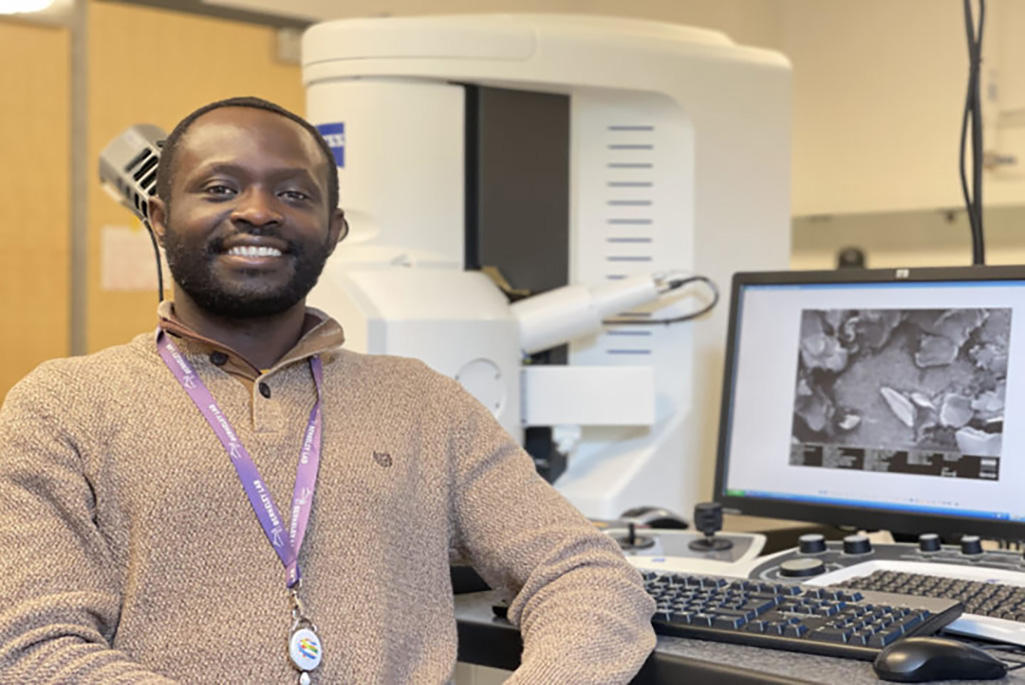Equipped with a Master’s degree in geology, 2022 Ingenuity Intern Elijah Adeniyi has been eager to apply his background to new areas of environmental science. “Taking on new challenges and learning,” Adeniyi stated, “is what science is all about.” As a Ph.D. student at Montana State University, Adeniyi is continuing to study geology and has collaborated with EESA scientists to study nuclear waste disposal.
What sparked your interest in nuclear waste storage?
I was interested in this internship specifically because it involves geological nuclear waste disposal. I have a background in carbon sequestration, and these two fields are actually related because they both entail the idea of storing waste, or something not wanted, in the subsurface.
My mentors in the internship program, Piotr Zarzycki and Chunhui Li, are experts in physical chemistry and computational science. We are using machine learning and Artificial Intelligence to predict how nuclear waste may interact with and pollute the environment in the event of a leakage. I have little background in this branch of chemistry, so there definitely is a learning curve. But I feel sometimes that is what science is all about – taking on new challenges and learning new things, even if it’s not exactly what I’m studying for my Ph.D.
Have you collaborated with others or strengthened your scientific background in any new areas?
I’ve had conversations with some researchers at the Lab and even a faculty member from UC Berkeley – I am surrounded by so many scientists! I’ve also learned from other interns and have tried to understand what others are studying to foster cross-pollination of knowledge.
My mentors have been really accommodating and gave me a lot of material to read – you need to have a strong understanding of a problem before you try and solve it. So, during the first few weeks of my internship I dove into the scientific literature, reading articles about, for example, what controls the aqueous and interfacial speciation chemistry of radionuclides in different geologic settings. I’ve learned a lot about surface complexation modeling, how to use new software, and how to use Python programming and machine learning to predict radionuclide chemistry in extreme conditions. All the new knowledge has been striking – but good. I am very grateful!
What is your favorite part about the Bay Area?
It’s quite nice weather compared to Montana. I’ve gone on some great hikes in Point Reyes and visited Treasure Island and San Francisco. This area is also quite diverse – I’ve only lived in Montana since I came to the United States in 2017, so being in a place that is racially diverse is interesting, and I love it.


